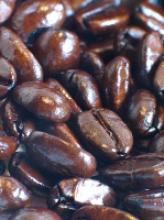Coffee in terms of the ur-bean, if you will, of the species Coffea arabica, is native to tropical Africa,
in the region known today as Ethiopia, and is in the same family Rubiaceae as the gardenia. Your basic coffee bean traveled, in the space of a little under seven hundred years, from tropical Africa to the courts and markets of Europe. Roughly a thousand years ago, c. 1000 CE, coffee was brought from Africa to Arabia. Coffee addiction and the love of the bean spread with the spread of Islam, and thus coffee was spread to North Africa, the eastern(and Islamic) half of the Mediterranean, and India. Arabia, no slouch when it came to international trade, protected their coffee monopoly by boiling or roasting beans before export, thus rendering them infertile, and insuring repeat customers. According to tradition, one enterprising smuggler trader named Baba Budan managed to depart Mecca with still-fertile seeds strapped to his body in what I can only describe as a traditional method of of export. Baba's beans were planted, and flourished, and in due time produced seeds, which flourished unto the ninth generation.Eventually, in the seventeenth century, coffee arrived in Europe via the machinations of a Venetian merchant in 1616. The enterprising, entrepreneurial Dutch proceeded to go to town, so to speak, creating coffee plantations on the then Dutch-controlled island of Java in Indonesia in 1696.
Soon the Dutch were bribing gifting aristocrats (presumably on the time-honored barrista principal of "the first shot is free), including crowned heads and wealthy merchants all over Europe with their very own coffee plants. Louis XIV of France received plant around 1714, and the plant was duly planted in the Royal Botanical Garden. Louis, not surprisingly, proceeded to refuse to share his drug produce. After a royal refusal to a plea for a cutting, a young Frenchman and native of the then French territory of Martinique, on Mathieu de Clieu, stole a sprout from the King's coffee seraglio, and scampered home to Martinique c. 1720.
The sprout increased and multiplied, to the extent of about 18 million trees in 50 years. From that sprout, coffee trees were planted all over South America—the principal source of coffee today. Indeed, in 1720 Lt. Col. Francisco de Melo Palheta of Brazil, managed to ah, convince, the wife of the governor of French Guina (east of Venezuela) to collude, and at a farewell dinner, she presented him with a bouquet of flowers, containing clearly visible (and consequently, diabolically hidden) seedlings of coffee trees he so very earnestly desired—and that the French Guiana coffee growers just as earnestly desired to keep to themselves.
By 1800, coffee plantions in Brazil had succeeded so very thoroughly, that coffee became no longer an aristocratic addiction beverage, but something for everyone to enjoy.
